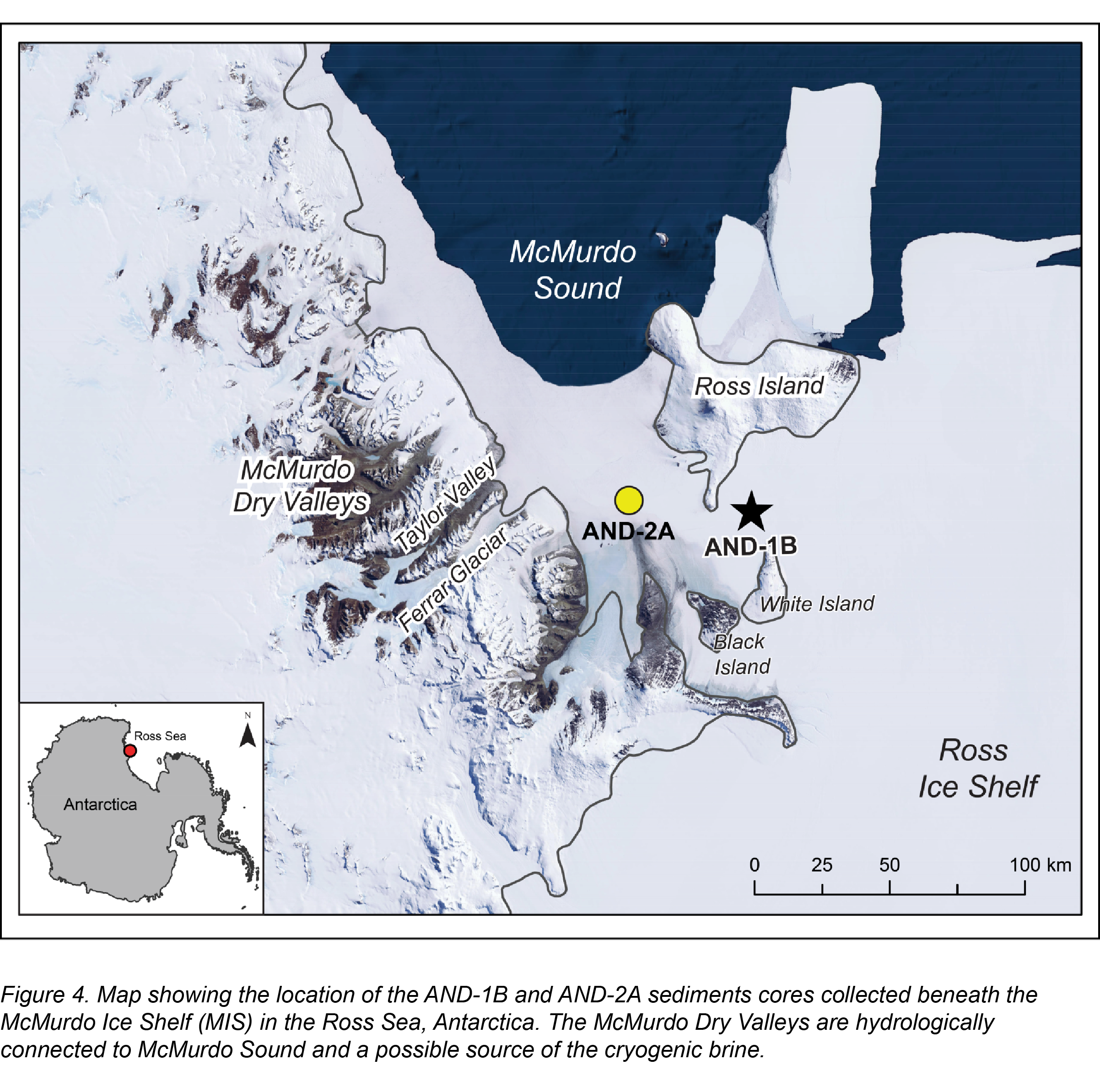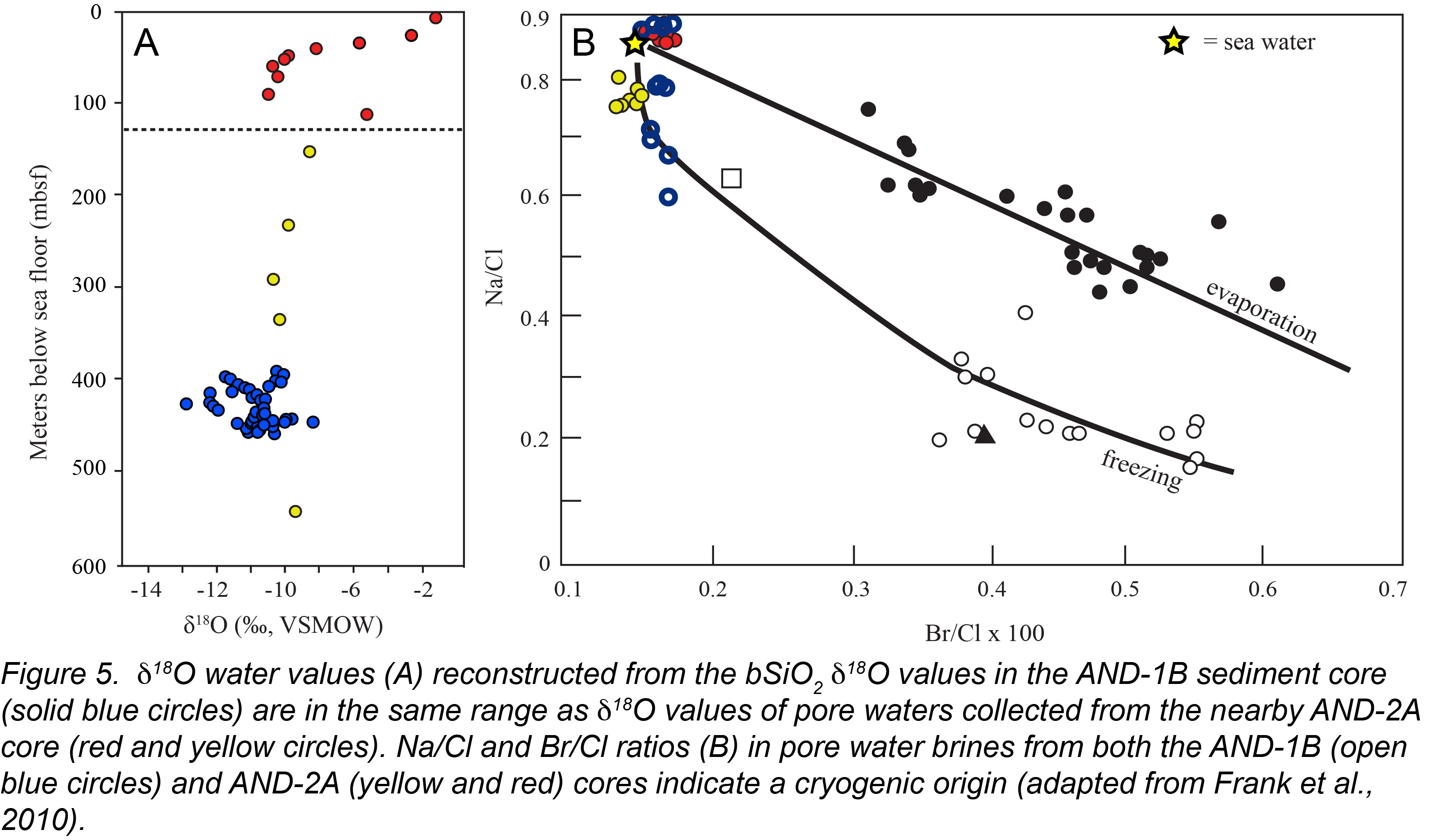Reports: DNI253798-DNI2: Silicon Isotopes in Biogenic Silica as a Novel Proxy for Exploring Carbon Cycle Dynamics Throughout the Cenozoic
Justin P. Dodd, Northern Illinois University
Project Background
Diatoms are responsible for as much as 75% of the total primary productivity in the oceans; silicic acid utilization and the precipitation of biogenic silica (bSiO2) as diatom frustules is the most significant component of the marine silicon cycle in the modern ocean. Silicon and oxygen isotope values in bSiO2 are increasingly used as a chemostratigraphic tool for characterizing global biogeochemical cycles; however, the effects of diagenetic processes and phase changes from opal-A to Opal-CT on these isotope proxies are not well understood. The research goals of this project are twofold: 1) to conduct a suite of experiments that will examine the fractionation of oxygen and silicon isotopes during sedimentation and diagenesis of bSiO2, then 2) to apply our understanding of isotopic variations in bSiO2 to develop records of oxygen and silicon isotope variations in a previously collected Antarctic marine sediment core (AND-1B). The ultimate goal of this project is to improve our understanding of global silicon cycling and elucidate large-scale changes in marine nutrient cycling over geologic time.
Research Progress
Experimental Results
The experimental focus of this research is on quantifying variations in oxygen (d18O) and silicon (d30Si) isotope values as bSiO2 undergoes diagenesis in laboratory settings designed to approximate sedimentary environments and geologic timescales. The first phase of the experimental research focused on variations in the bSiO2 d18O values that occur during early diagenesis coincident with physical changes to the opal-A structure. During the second phase, we conducted experiments on natural Miocene-age bSiO2 samples to assess isotopic variations during the phase change from opal-A to opal-CT.
The bSiO2 (opal-A) was reacted at 150oC to 200oC in stainless steel reaction vessels (Parr 4746) with a Teflon insert. Initial samples have an FTIR spectrum indicative of mature opal-A (black line; Fig. 1), with a d18O value of 28.1 ± 0.4 %o (n=6). Multiple experiments were conducted with the Shasta opal-A and a single additional cation source (MgCl, MgCaCO3, AlCl, FeCl) to assess the potential for opal-CT formation in the presence of different cations. In mixed phase (opal-A and opal-CT) samples, shifts in the FTIR (Fourier transform infrared) spectra were used to identify changes in the relative abundance of opal-A and opal-CT (Fig. 1). Additionally, scanning electron microscopy (SEM) was used to visually confirm the presence of opal-CT lepispheres (Fig. 2).
Observed variations in d18O values of the samples occurred in two experimental environments: 1) blank (bSiO2 + DI H2O) and 2) during opal-CT formation (MgCO3). In all other experimental environments (AlCl, FeCl, and MgCl) no opal-CT was formed and there was no significant difference in d18O values (28.5 ± 0.6 %o; n=6; Fig. 1 gray line). When no additional cations were present (blank) it is likely that dissolution of the original bSiO2 resulted in a kinetic fractionation and the elevated d18O values (31.3 %o). The formation of opal-CT resulted in measured decrease to 24.6 ± 0.2%o. The 3.5%o change in the d18O values (Fig. 3) reflect the formation of opal-CT (Fig. 1 dashed line) at high temperatures as predicted by silica-water equilibrium isotope fractionation. Our experimental data indicate that bSiO2 d18O values likely record shallow sedimentary (pore-water) d18O values and temperatures in environments were opal-CT formation and dissolution are limited.
Antarctic Marine Sediments Results
Temperature increases of 2.5-5oC and projected sea level rise of 9-13.5 m above modern levels during mid-Pliocene warm period likely resulted in a significant collapse of the West Antarctic Ice Sheet (WAIS; Winnick and Caves, 2015). Although many studies have cited the mid-Pliocene warm period as a potential analog for future warming, is not clear how the warming will effect glaciation in the Transantarctic Mountains and the McMurdo Dry Valleys (MDV) regions. Saline groundwater (brine) systems have been identified in the MDV, and resistivity measurements indicate that these subsurface brines are hydrologically connected to McMurdo Sound (Mikucki et al., 2015). Our hypothesis is that early diagenesis and interaction with submarine cryogenic brines could result in low bSiO2 d18O values.
Sediments collected through ANDRILL (ANtarctic geological DRILLing) beneath the McMurdo Ice Shelf (MIS) in the Ross Sea (AND-1B and AND-2A cores; Fig. 4; Naish et al., 2009; Frank et al., 2010) provide a means to test this hypothesis. The d18O data from bSiO2 (opal-A; blue line Fig. 1) in the mid-Pliocene aged (3.52-4.67Ma) sediments of the AND1-B core indicate a significant but variable flux of cryogenic brines from the MDV to the subsurface sediments of McMurdo sound during the Pliocene (Fig. 5). Additionally, preliminary d30Si values from the bSiO2 1) indicate that silicon isotope values are less susceptible to diagenetic alteration in the sediments, and 2) record changes in silicic acid utilization and diatom productivity in the surface waters of McMurdo Sound during the mid-Pliocene (Fig. 6).
Future work and Research Impact
Silicon isotope measurements are underway on the cultured and aged bSiO2. Additional experiments are also aimed and quantifying variations in oxygen and silicon isotope values of the bSiO2 during phase changes from opal-A to opal-CT at a range of temperatures. This research has fostered the academic development of two graduate students and seven undergraduate students. Additionally, understanding the relationship between chemical, structural, and isotopic variations in bSiO2 is a major early career research goal for the PI. Using oxygen and silicon isotope analyses as a proxy for past environmental conditions, particularly in the Southern Ocean/Antarctic marine sediments has the potential to greatly expand our understanding of nutrient cycling, ocean circulation, and climate during pervious warm periods in the Cenozoic. These experimental data represent a critical step in interpreting oxygen and silicon isotope values of bSiO2 from the AND-1B core and other marine sediment records.
References Cited
Frank, T.D., et al., 2010, Geology, 38, 587–590.
Konfirst, M.A., 2011, Marine Micropaleo., 80, 114–124.
Mikucki, J.A., et al., 2015, Nature Communications, 6:6831.
Lisiecki, L.E. and M.E., Raymo, 2005, Paleoceanogr. 20, PA1003.
Naish, T., et al., 2009, Nature, 458, 322–329.
Winnick, M.J., and J.K. Caves, 2015, Geology, 43, 879–882.

















